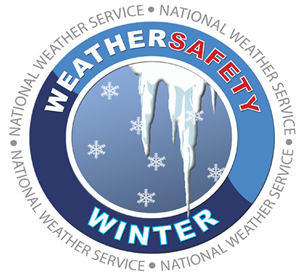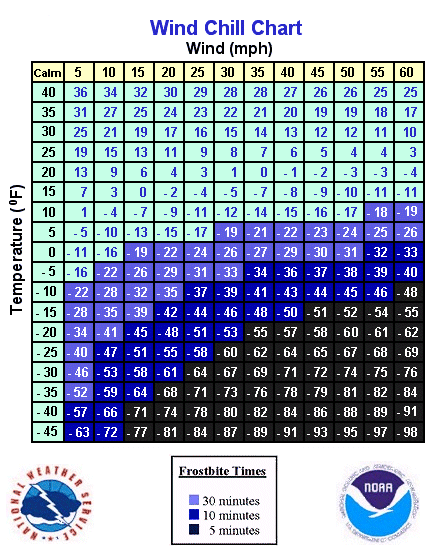Are You Ready for Another Wisconsin Winter?
Winter Weather Awareness Week in Wisconsin
The National Weather Service and Wisconsin Emergency Management use this week to remind everyone about the dangers of hazardous winter weather and extreme cold. The NWS urges you to prepare and be ready BEFORE a winter storm or cold wave hits.
|
A variety of topics are covered during Winter Weather Awareness week, including:
|
 |
Click here for more winter weather and safety information. Additional information will be available on our Facebook and Twitter pages!
NWS Winter Weather Information and Terms
It is important that you learn and understand the definitions of different winter related headlines. Here are the main products used by the NWS to keep people informed.
Hazardous Weather Outlook
- The Hazardous Weather Outlook (HWO) includes any potential weather hazard out to seven days. It is used for planning purposes and will include a short description of what the weather threat is, when it is expected, and how much it may impact the region. The HWO is issued daily around 5:00 AM, and updated during the day as needed. It is also broadcast on NOAA Weather Radio and available on our website.
Winter Storm Watch
- A Winter Storm Watch is issued when there is a potential for a winter storm to affect the region during the next one to three days. It does not always mean the area will be hit by a winter storm--there is still some uncertainty of the exact path or timing of the event. This is a planning stage--use this time to ensure you have supplies at home, like some extra food, medications, baby items, etc. If travel is planned, check ahead and see if a different route or delaying your departure may make your trip safer. Be alert for changing weather conditions.
Winter Weather Advisory
- Advisories are issued for those winter weather events that are expected to be more of an inconvenience and should not become life-threatening if caution is exercised. These are often issued for 3 to 5 inches of snow, blowing and drifting snow, freezing rain, or a combination of these elements. It may be issued for less snow for early season events or events that cause more impact (e.g., brief, heavy snow during rush hour).
Winter Storm Warning
- Winter Storm Warnings are usually issued when dangerous winter weather is expected, occurring, or imminent. The weather can become life-threatening. Criteria includes snowfalls of 6 inches or more in 12 hours, 8 inches in 24 hours, or lower amounts if accompanied by strong winds or a combination of dangerous winter elements. Avoid unnecessary travel.
Blizzard Warnings
- The most dangerous winter event is certainly the blizzard. Blizzard Warnings are issued when snow or blowing snow lowers visibility to a 1/4 mile or less, wind gusts hit 35 mph or higher, and the storm lasts for 3 hours or more. Travel is dangerous and should be avoided if possible.
Ice Storm Warning
- Ice storm Warnings are issued when freezing rain will cause widespread glazing. A coating of ice is expected to reach 1/4 inch thick or more on objects and make travel nearly impossible. For lesser amounts of ice, a Freezing Rain Advisory would be used, but even a thin glaze of ice can make travel difficult. Avoid travel.
Snow Squall Warning
- Issued when brief snow showers reduce visibility to 1/4 mi or less with gusty winds, blowing snow, and cold road temperatures that could result in flash freezes and very dangerous travel conditions. Usually reserved for high-impact times.
Wind Chill Warning
- Issued when wind chills of -35 F or lower are expected. A Wind Chill Advisory is issued for values of -20 F or lower. Dress warmly and cover as much exposed skin as possible.
Winter Storm Climatology
On average, northeast and north-central Wisconsin experiences 3 to 5 winter storms a season and a significant ice storm once every 4 or 5 years.
The average date of the first snowstorm in Wisconsin is November 10.
What is the prediction for this winter? The latest 2021-2022 winter outlook calls for the return of La Niña with wetter-than-average conditions and warmer-than-average temperatures favored for the Great Lakes. The latest outlook for December-February for the U.S. is available here.
Wind Chill Index
The "Wind Chill" Index is a calculation of how cold it feels outside when the effects of temperature and wind speed are combined. The National Weather Service in Green Bay issues Wind Chill Advisories when they reach -20 F, and Wind Chill Warnings when they drop to -35 F or lower. Exposure to cold, biting air for long periods of time is dangerous.

For a wind chill calculator, click here.
Frostbite and Hypothermia
Watch for signs of frostbite or hypothermia when outdoors during extreme cold weather.
Frostbite is a severe reaction to cold exposure that can permanently damage its victims. A loss of feeling and a white or pale appearance in fingers, toes, or nose and ear lobes are symptoms of frostbite. In fact, research has shown that uncovered fingers can freeze up to 8 times faster than a human cheek, and the nose can freeze 3 times faster. This illustrates the importance of keeping fingers and parts of your face (ear lobes, nose) well covered in extreme cold weather.
Hypothermia is a condition brought on when the body temperature drops to less than 95 deg F. Symptoms of hypothermia include uncontrollable shivering, slow speech, memory lapses, frequent stumbling, drowsiness, and exhaustion.
If frostbite or hypothermia is suspected, begin warming the person slowly and seek immediate medical assistance. Warm the person's trunk first. Use your own body heat to help. Arms and legs should be warmed last because stimulation of the limbs can drive cold blood toward the heart and lead to heart failure. Put the person in dry clothing and wrap their entire body in a blanket.
Never give a frostbite or hypothermia victim something with caffeine in it (like coffee or tea) or alcohol. Caffeine, a stimulant, can cause the heart to beat faster and hasten the effects the cold has on the body. Alcohol, a depressant, can slow the heart and also hasten the ill effects of cold body temperatures.
Winter Weather Preparedness
Proper winter weather awareness includes preparation. Here are some things that can help you.
- When Outdoors:
- Check temperatures and wind chill indicies first.
- Dress warmly, with several layers. Dress for the worst just in case.
- Use a warm coat, gloves or mittens, a hat, and water-resistant boots.
- Cover exposed skin as much as possible.
- Watch for frostbite on finger tips, ear lobes, the nose, or toes.
- Avoid over-exertion. The cold already puts a strain on the body and heart.
At Home or Work - make sure you have:
- Extra flashlights and batteries
- A battery-powered NOAA Weather Radio or AM/FM portable radio
- Extra food and water (2-3 day supply)
- Extra medicine and baby items
- First aid supplies
- Emergency heating source**
- Carbon monoxide detector
** If you use an emergency heating source, be alert for deadly carbon monoxide gases and never place it near another object that may catch on fire. Many house fires during the winter are caused by incorrect use of a space heater. Keep the space heater at least 36 inches away from other objects and turn it off if you leave the room.
On the farm:
- Move animals to a sheltered area.
- Supply extra food for animals.
- Have a fresh water supply (most animal deaths during the winter are from dehydration).
At School:
- Have an action plan.
- Monitor weather conditions closely.
- Use NOAA Weather Radio to get hourly wind chill values.
- School days may need to be delayed, cancelled, or shortened.
When Traveling:
- Winterize your vehicle. Check the battery.
- Check the forecast and road conditions ahead of time.
- Consider adjusting your route to avoid poor driving conditions.
- Carry a cellular phone for use during emergencies.
- Keep the gas tank near full.
- Coordinate with others your destination and times of travel.
- Yield to snowplows. The snow cloud they produce can lower visibilities to near zero. Stay back - Stay Alive!
- Have a survival kit in your car:
- Extra blankets or sleeping bag
- Flashlight with extra batteries
- First Aid kit with pockey knife
- Booster cables
- A rope
- A small shovel
- A bag of sand or cat litter for traction
- Plastic bags (for sanitation)
- Extra gloves, hat, and socks
- Non-perishable food items and bottled water
- Road maps (for alternative routes)
- If you do get stuck:
- Stay with your car. Do not try to walk to safety.
- Start the car for about 10 minutes every hour for heat.
- Keep the exhaust pipe clear of snow.
- Tie a bright colored (red or orange) cloth to the antenna.
- Turn the dome light when running the engine.
- If you must venture away from the car, use a life-line or rope.
- Be careful of Dense Fog. Delay your travel if needed.
- Do not drive into a dense fog bank. Others may be stopped.
- In October 2002, a pile-up on Interstate 43 in eastern Wisconsin killed 10 people during dense fog.
- In January 2008, another series of accidents in southern Wisconsin led to fatalities due to dense fog.
NOAA Weather Radio
Staying informed of hazardous winter weather is a good way to prepare or avoid dangerous situations, especially if you have travel plans. NOAA Weather Radio is an excellent source of weather information directly from the National Weather Service.
Every school should monitor NOAA Weather Radio for the latest weather conditions, including hourly wind chill values, and winter storm forecasts!
NOAA Weather Radio broadcasts 24 hours a day - 7 days a week. At the touch of a button you can hear the:
- Current weather conditions, including hourly wind chill values
- The 7-day forecast
- Radar summaries and short term forecasts
- Any watches, warnings, or advisories in effect
- Hazardous Weather Outlooks
- Other pertinent weather information as needed
To visit our NOAA Weather Radio page, click here.
